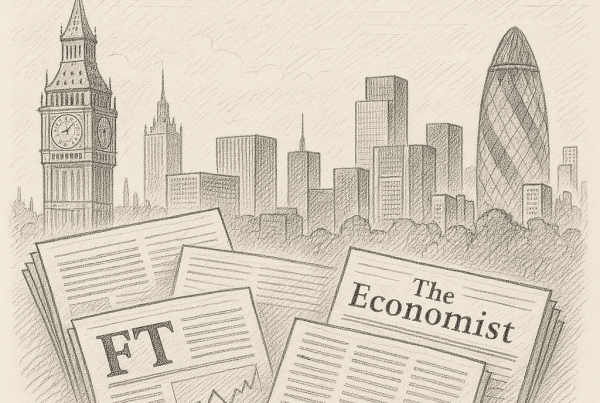21.10.25
Yes, but not in the way you might imagine.
The Atlantic published a piece yesterday on AI’s impact on interview processes:

Perhaps unsurprisingly, it references several TikTok videos with titles like “My interviewer thought he caught me using AI in our LIVE interview” and “My brother is interviewing for a $469k engineer job using AI”. Yes, these bots exist and yes, there are bluffers who will roll the dice. Whilst the article does come to an interesting discussion around emerging generations’ perception of the abstract nature of contemporary corporate labour; so-called bullshit jobs, echoing the popularity of “purpose led” careers often spoken about in healthier economic circumstances, it fails to address the reality of broken interview processes and to consider broader trends that pre-exist the use of agentic AI.
Across our business, we interview over 200 people per week, some via video link, others in person. After a quick straw poll, I discovered fewer than five instances of interviewees using AI to live prompt answers. The issue crops up more frequently in tasks and presentations, where the problem lies more predominantly in how transparent candidates are about when and where they have used AI, rather than a blanket opposition to its use. It is extremely rare for employers to publish or communicate policy on where AI use is appropriate or permitted across interview and test stages.
No doubt, AI is a powerful tool with the power to corrupt and undercut all kinds of corporate systems and processes, but interviewing, hiring, and building a workforce who can exist productively alongside one another is an intrinsically human endeavour (or it certainly should be).
In 2020, The New York Times published a similar piece, sharing a title with The Atlantic’s:

The New York Times article highlights the talking points of the time: unconscious bias, presentation bias, familiarity bias etc. All still valid although criminally underdiscussed, given the current political landscape. The real value of its perspective lies in its analysis of interview structure.
I have worked with hundreds of hiring managers, and considering interview structure has never been less fashionable. Typically, candidates will experience between two and four conversational interviews, usually one on one, with the majority conducted via video link. There interviews tend to be very open, conversational, and ad hoc:
“Talk me through your experience.”, “Why did you leave your last role?”, “What does a typical week look like?”, “Why are you interested in joining us?”, “Can you discuss a project you are proud of?”, “How do you work with difficult characters?”
Although these conversations feel comfortable for both candidate and interviewer, over time the responses become grooved, automatic, and designed to be generically persuasive.
The best processes I’ve been a part of include interviews that are preplanned, including format, tone, and discussion points. They also insist on in-person interviews at from an early stage, eliminating the chance for candidates to use live prompts. An example:
First interview
Interviewers: Hiring Manager and Deputy.
Location: Remote.
Tone: Inviting
- Role and company pitch led by Hiring Manager
- Questions on career overview, and relevancy, and logistics
- Thorough discussion on short to long term motivation and motivational alignment
- Candidate questions on day to day
Assess: Relevance, general motivation, enthusiasm
Second interview
Interviewers: Managing Director and Editor.
Location: In office.
Tone: Investigative
- Competency based interview
- Discuss achievements and challenges, business strategy and strategic relevance
- Stress test motivations
- Candidate questions on company direction and vision
Assess: Quality of output, strategic thinking, appreciation of company vision, strengths and weaknesses versus shortlisted candidates
Task
Devised by management team with clear perimeters, timelines and criteria.
Final stage
Interviewers: Hiring Manager and Managing Director.
Location: In office or off site, as appropriate.
Tone: Adapted to situation.
- Focus on alignment between candidate and company vision
- Opportunity to raise and resolve and concerns or areas of uncertainty
- Pitch led by Managing Director
If interviews feel “broken,” it’s not because agentic AI has suddenly outsmarted us, it’s because too many processes are casual and uncalibrated. Conversational screens that reward fluency over
evidence, tasks without clear criteria, and an absence of AI-use policies create spaces that candidates learn to game long before they employ an AI agent.
The fix is unglamorous but proven. Plan recruitment processes like we do across all other areas of our businesses. Use structured questions with scoring criteria tied to the role’s outcomes. Move in person earlier. Where tasks are used, be explicit about what’s permissible. Consider what best in class interview preparation and calibration looks like, and audit for bias.
The choice isn’t between embracing or banning AI; it’s between lazy and deliberate interviewing. The former invites drift and performative answers and the latter build a workforce that can operate
productively alongside new tools. Fix the structure, state the rules, and better processes follow.
Article by Ben Galyas, Associate Director







